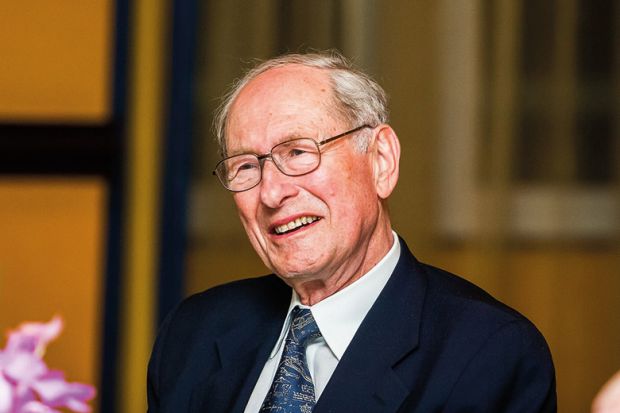A leading international theoretical physicist has died.
Arthur Kerman was born in Montreal in May 1929 and studied physics and mathematics at McGill University (1950) before going on to a PhD in nuclear surface oscillations at the Massachusetts Institute of Technology (1953). He then secured a postdoctoral fellowship from the National Research Council at the California Institute of Technology (1953-54) and spent two further years at the Institute for Theoretical Physics (now the Niels Bohr Institute) in Copenhagen.
After returning to MIT as an assistant professor in 1956, Professor Kerman was promoted to associate professor in 1960, spent a year on an exchange at the University of Paris, and became a full professor in 1964. He served as director of MIT’s Center for Theoretical Physics (1976-83) and later its Laboratory for Nuclear Science (1983-92). He was actively involved in consultancy work and the creation of better physics textbooks for schools. He was also among the scientists who spent a month in Washington DC with a view to becoming part of the government-sponsored advisory group known as JASON.
“We were asked at the beginning of our particular interests,” recalled Sheldon Glashow, now Metcalf professor of mathematics and physics at Boston University, who went to Washington DC with Professor Kerman. “What they were getting at was whether we wanted ‘war’ work or ‘peace’ work. Everybody, except us three ‘lefties’ including Arthur, chose ‘war’.
“Our ‘peaceful’ challenge was to examine all available sources, whether classified or not, to assess the potential value of airborne or satellite surveillance of the Soviet Union and to produce a supposedly unclassified document. We did our work and our document was promptly classified. We never heard back from JASON, nor did we care.”
A prolific author of scientific papers, Professor Kerman specialised in the structure of nucleus and the nature of nuclear reactions, although he also worked on astrophysics and the development of advanced particle detectors. He was an early advocate of the importance of quarks for understanding nuclear physics.
Even after he retired from MIT after 47 years and became an emeritus professor, he continued to attend the weekly physics department lunches and was still working on a new theory of dark matter and energy until shortly before his death. He was also until the end, according to Bruno Coppi, emeritus professor of physics at MIT, “a valued adviser to different national laboratories and to the highest levels of the Department of Energy”.
Professor Kerman died on 11 May and is survived by his wife, Enid Ehrlich, five children, 11 grandchildren and two great-grandchildren.




